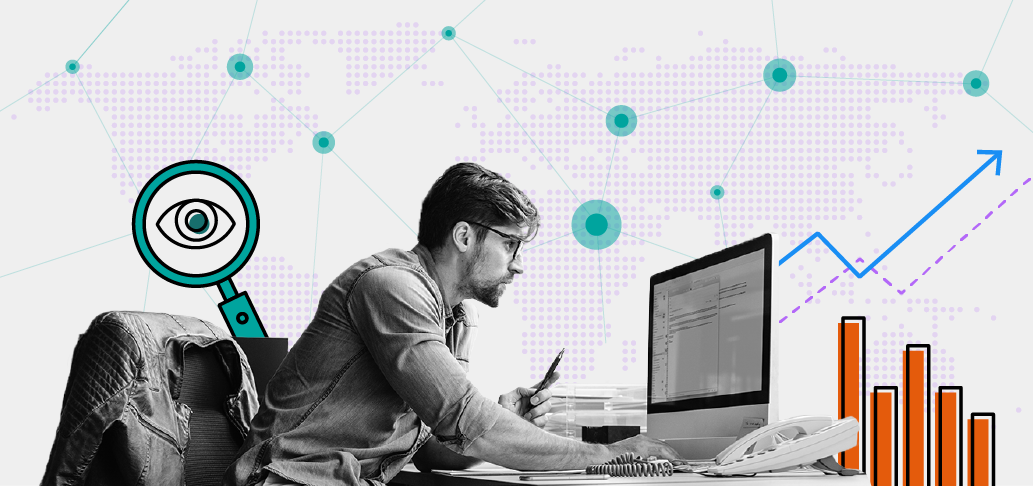5 Real-World Uses of Machine Learning in the Supply Chain
If your role is impacted by the global supply chain in any way, and the chances are high that it is, you know that now more than ever, added visibility and data are crucial to the current and future success of your organization.
A recent survey of more than 1,000 supply chain professionals worldwide found that 25% plan to invest in AI products in the next three years, primarily due to the pressure the supply chain faced during shock demand during the pandemic. In addition, 17% of respondents said they use AI already, and another 45% predicted they'd use it in five years.
"The supply chain disturbance caused by the pandemic has been a wake-up call for many companies in the transportation sector. The need for greater supply chain resiliency has opened the appetite to invest in technology..."
— Pedro Pacheco, Gartner senior research director
Artificial intelligence (AI) and machine learning (ML) have seen unprecedented adoption in recent years — with much more to come. But many organizations still struggle with where and how to implement these frameworks.
Let’s get into five ways to build ML into your organization, while also driving growth and adoption.
Tracking Product Quality with Computer Vision
McKinsey estimates that manufacturing alone produces 1.9 petabytes of data yearly, mainly in sensors and memory-intensive applications like computer vision. A computer vision model can scan products while they are in different stages of processing to determine where there might be any errors, shrinkage, or loss in unexpected ways. Machine learning and computer vision can identify breakages in the manufacturing process and where human error could introduce risk.
For example, we worked with a global food processor to implement computer vision to scan chicken packages and more accurately identify the type of cut. The correctly identified chicken would then be labeled and sorted. Before this solution, the food processor was losing $60M annually due to lost inventory from mislabeling alone.
Inventory Visibility & Management
Inventory visibility and management systems often leverage legacy ERP components, RFID, people ops, and computer vision to identify issues and opportunities. Barcodes and RFID are crucial to track where products are located in a facility or warehouse so that shipments are accurate, but this is typically only one part of the problem.
These operations are also persistent at the retail shelf level. Walmart is a pioneer in many inventory management innovations, including proactively scanning shelves to order and restock products without needing manual interventions. Where competitors struggle to integrate this into their supply chain is the component that leverages multiple features. There is no panacea or platform for success; it requires rigorous human interaction and continuous training to get value. It's more imperative than ever to master inventory management due to the blend of brick-mortar and e-commerce investments that require vastly different supply chains to meet the demand of consumer preferences.
Demand Forecasting
Aka, the holy grail of machine learning for supply chain applications. The supply chain is subject to immense pressures at both the macro and micro levels that have vastly different effects on forecasting. Machine learning models, when built right, can more accurately analyze many aspects affecting a supply chain at once, and therefore better predict demand.
Examples of macro components are pandemics, predicting consumer preferences when it comes to weather forecasts, and even geopolitical boundaries like political conflict. Micro-level influences are as simple as pricing pressures from customers, but even how individual distributor supply can speed up or slow down product flow.
Machine learning, at its more fundamental component, can help identify when demand is out of normal parameters and how to recommend changes to alleviate any pressures on the supply or demand sides.
Route Optimization & Delivery Predictions
Route optimization is a significant component of the transportation and logistics space that machine learning can improve. Machine learning can help optimize routes for minimizing gas usage and improving margin and revenue. Another component of routing optimization is identifying missed delivery windows. ML can help identify deliveries that are at risk of being late based on a variety of factors like delivery location, delivery type, traffic patterns and driver behavior. Optimization heavily depends on the driver behaviors, and machine learning can add insights into driving behaviors that increase risk or inefficiency. Route optimization can leverage real-time machine learning by optimizing routes based on delays, traffic, or weather to avoid issues affecting delivery windows.
Predictive Maintenance
Fleet management is a crucial aspect of any supply chain. Mechanical delays can be costly from efficiency loss, but also in customer sentiment if delays occur. Predictive maintenance is more than just predicting a change should happen, but some fleet systems even order the parts in advance so they’re ready for installation before any issues arise.
IoT devices on most newer vehicles generate 25 gigabytes of data. Most vehicles have a wealth of data, and creating ML applications to predict maintenance can save any company with a fleet money and time.
Supply chain management has so many dependencies that can cause delaysIt’s an interconnected network of suppliers, distributors, and consumers in a chaotic balance that can be crippled with even minor interruptions. We have learned how the pandemic has impacted even essential products and how inflation affects buyers' purchase behavior. Machine learning can help supply chain organizations run leaner operations and solve problems before they arise – IF they apply it in the right ways.











